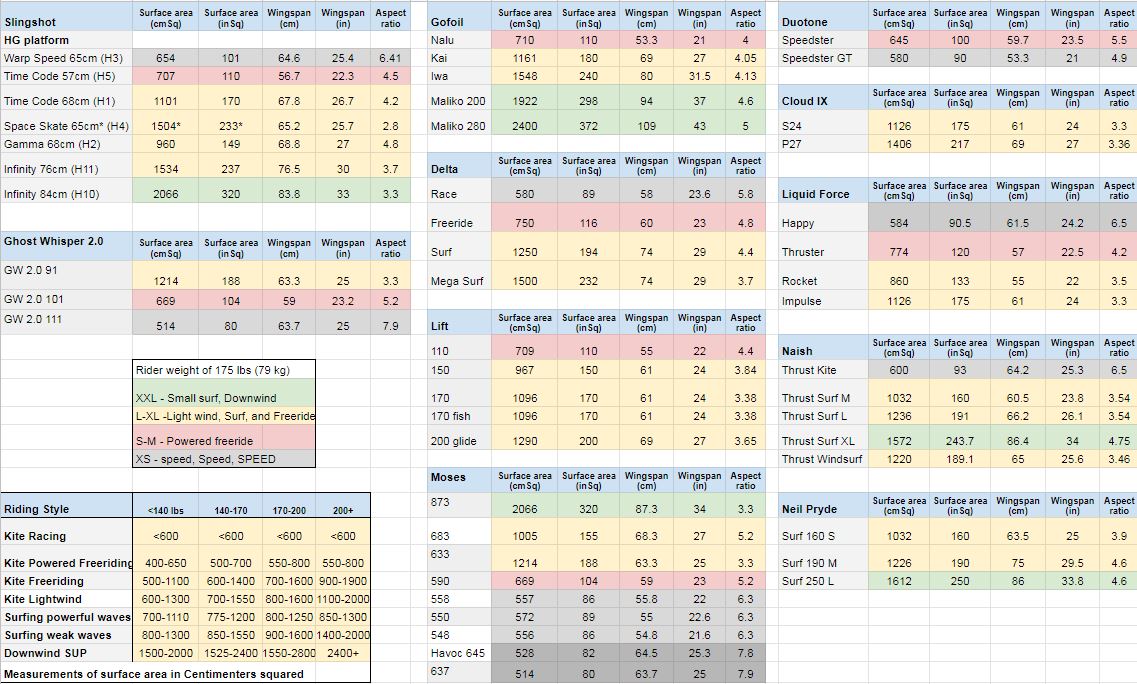
Foil
Hydrofoiling has become the latest craze in kiteboarding, surfing, stand up paddleboarding, windsurfing, and wakesurfing. Even to us, it seems to still be new and more innovative with every passing season. While hydrofoil riding seems new, hydrofoiling actually dates back to 1906, with a hydrofoil boat crafted by Italian engineer Enrico Forlanini From there, it's moved on to Olympic sailing, skis, sit-down foilboards, kiteboards, and then on to nearly all board watersports.
Foilboarding has recently exploded in popularity within the watersports community. With an efficient design, hydrofoils allow riders to cross into that sub-10 knot threshold while still having a ton of fun with a kite. The same logic has been applied to surfing, SUP, windsurfing, and wakesurfing. Riding above the surface of the water, a foil board gives you the illusion of what can only be described as floating. For kiteboarders in light wind areas or wave riders looking to better maximize marginal conditions or simply experience something completely new, the foil is the perfect solution.
-

Slingshot One-Lock Foil - Build Your Own Package
Slingshot Sports
$1,527.00 - $3,157.00Slingshot Build-Your-Own One-Lock Package Now's your chance to choose the perfect pairing for your wing and kite foiling progression. Let's break down the differences for wing foilers: The Glide provides an all-around medium aspect wing with a beautiful...$1,527.00 - $3,157.00 -

Slingshot One-Lock Kite Foil Package
Slingshot Sports
$1,177.00 - $2,637.00Slingshot One-Lock Kite Package Dustin's Take on the One-Lock Kite Foil: The Slingshot One-Lock system has been a game-changer this summer. Fast setup, less hassle, and more time on the water. There are three front wing options for kite. The 1255 is...$1,177.00 - $2,637.00 -


2025 WAKA Rolling Waka
WAKA
$225.00 - $245.00Rolling Waka Travel System Transform your foiling adventures with the Rolling Waka – the ultimate travel companion for your Waka folding board and gear. Designed specifically for air travel and adventure mobility, this rugged travel system makes...$225.00 - $245.00 -


Slingshot One-Lock Kite Quickstart Package
Slingshot Sports
$1,599.00KITE / PROGRESSION / AFFORDABLE / MODULAR One-Lock Kite Front Wings are designed to elevate your kite foiling experience, no matter your skill level. From control and stability to unmatched speed and precision, these wings cater to every rider's...$1,599.00 -


Slingshot One-Lock Wing Quickstart Package
Slingshot Sports
$1,599.00Includes: One-Lock Ease Front Wing 1850 One- Lock Verse Tail 270 One-Lock Aluminum mast 82 RTS Kit Every Slingshot One Lock foil purchase through MACkite comes with 6 months of satisfaction guaranteed! With our One Lock. One Love program, you have 6...$1,599.00 -


Slingshot One-Lock Wake Quickstart Package
Slingshot Sports
$1,499.00WAKE / PROGRESSION / AFFORDABLE / MODULAR The Ease line of front wings is designed for riders seeking an entry-level foil that will support them through turns, foot swaps, pumping, and tacks. Built to grow with you, the Ease line of wings in the One-Lock...$1,499.00 -


Slingshot One-Lock Flow Front Wing
Slingshot Sports
$999.00 - $1,089.00PUMP / ACCELERATE / CARVE The One-Lock Flow Front Wing series is the most efficient, high-aspect, and high-performance wing in the One-Lock lineup, designed for maximum glide, efficiency, and reactivity. Ideal for prone, downwind, wake, and wing foiling,...$999.00 - $1,089.00 -


Slingshot One-Lock Kite Front Wing
Slingshot Sports
$829.00 - $909.00One-Lock Kite Front Wing 755 FAST / MANUEVERABLE / PLAYFUL THE DESIGN DIFFERENCE: The One-Lock Kite Front Wing 755 was designed in collaboration with Fred Hope. It’s fast, responsive, and incredibly agile, allowing for quicker direction changes...$829.00 - $909.00 -


Slingshot One-Lock Ease Front Wing
Slingshot Sports
$749.00 - $899.00EASY / PREDICTABLE / CONFIDENT The Slingshot One-Lock Ease Front Wing is the most user-friendly option in their One-Lock system. Design Details: THE DESIGN DIFFERENCE:Designed with a forward maximum thickness and medium camber, it offers excellent...$749.00 - $899.00 -


Slingshot One-Lock Glide Front Wing
Slingshot Sports
$869.00 - $1,149.00LIFT / GLIDE / CARVE The Slingshot One-Lock Glide Front Wing is the most efficient front wing in the One-Lock line. Design Details: THE DESIGN DIFFERENCE:Through utilizing a medium-high aspect ratio, we found the most forgiving and playful front wing...$869.00 - $1,149.00 -


Slingshot One-Lock PRO HM Carbon Mast 102cm
Slingshot Sports
$1,729.00HIGH MODULUS CARBON / STIFF / HIGH END The One-Lock High Modulus Pro 102 Mast continues with the incredibly high stiffness of our High Modulus mast line. Featuring a new profile with an increase in speed range, this mast provides a smoother acceleration...$1,729.00 -

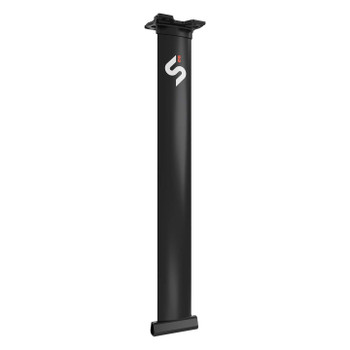
Slingshot One-Lock Aluminum Mast
Slingshot Sports
$479.00 - $519.00LIGHT / PREDICTABLE / AFFORDABLE The Slingshot One-Lock Aluminum Mast is one of the lightest aluminum mast on the market. THE DESIGN DIFFERENCE: Constructed with 6061 grade aluminum, the design optimizes aluminum placement for maximum weight savings and...$479.00 - $519.00 -


Slingshot One-Lock HM Carbon Mast
Slingshot Sports
$1,429.00 - $1,629.00HIGH MODULUS CARBON / STIFF / HIGH END The Slingshot One-Lock HM Carbon Mast is among the stiffest on the market, offering exceptional rigidity in both longitudinal bending and torsion. THE DESIGN DIFFERENCE: Constructed with High Modulus Carbon and a...$1,429.00 - $1,629.00 -


Slingshot One-Lock Carbon Mast
Slingshot Sports
$1,029.00 - $1,229.00CARBON / LIGHT / MODULAR The Slingshot One-Lock Carbon Mast is the stiffest standard carbon mast they have ever made. THE DESIGN DIFFERENCE: Constructed with Mid-High Modulus Carbon and a hollow core, the design optimizes carbon placement for maximum...$1,029.00 - $1,229.00 -


Slingshot One-Lock Flare Tail Stabilizer
Slingshot Sports
$379.00GLIDE / PUMP / CARVE The One-Lock Flare Tail line is our most efficient and reactive low-drag stabilizer, offering the shortest fuselage and wing combo in the One-Lock system. Designed for maximum acceleration and pumping efficiency, it features an 11...$379.00 -


Slingshot One-Lock Carve Tail 200 Stabilizer
Slingshot Sports
$379.00SNAP / HOLD / SPEED The Slingshot One-Lock Carve Tail 200 is their fastest stabilizer. Design Details: THE DESIGN DIFFERENCE:With a preset angle of -1.5°, it’s perfectly tuned for minimal drag. Combined with its large upturned wingtips, the...$379.00 -


Slingshot One-Lock Verse Tail 270 Stabilizer
Slingshot Sports
$299.00STABLE / PREDICATABLE / CONFIDENT The Slingshot One-Lock Verse Tail 270 is their most stable stabilizer. Design Details: THE DESIGN DIFFERENCE:With a preset angle of -2.25°, it ensures consistent lift, even at low speeds. The anhedral design of the...$299.00 -


Slingshot One-Lock Turbo Tail 180 Stabilizer
Slingshot Sports
$379.00GLIDE / PUMP / PLAYFUL The Slingshot One-Lock Turbo Tail 180 is our most efficient and reactive low-drag stabilizer in the One-Lock system. Design Details: THE DESIGN DIFFERENCE:This stabilizer is set at a carefully calculated angle of -2.75° to...$379.00 -
On Sale
Slingshot Rear Wing Stabilizer 42cm
Slingshot Sports
Now: $35.00Was: $245.542019 Slingshot Rear Wing Stabilizer 42cm 42 cm Rear Stabilizer Wing for Slingshot and Ride Engine Foils. Wing only - no hardware included Shop for replacement hardware Slingshot Foil Selector If you are not sure what foil to get let the...Now: $35.00Was: $245.54 -
On Sale


MFC Wing Day Single Boardbag
MFC
Now: $79.99Was: $165.00MFC Wing Day Single Boardbag Sizing: length + width + side wall hight > 5’4” | 66.5” x 28.5” x 3.125” | 170 x 72,5 x 8 cm> 5’8” | 72” x 32” x 3.125” | 183 x 80 x 8...Now: $79.99Was: $165.00 -


Manera Day Bag WING
Manera
$129.00 - $169.00Manera Day Bag WING 5'0" x 28" [156cm x 70cm x narrow] - size up 5'5" x 32" [170cm x 75cm x narrow] - size up 6'0" x 34" [185cm x 85cm x narrow] - size up Foilboard Bag Compatibility...$129.00 - $169.00 -
On Sale
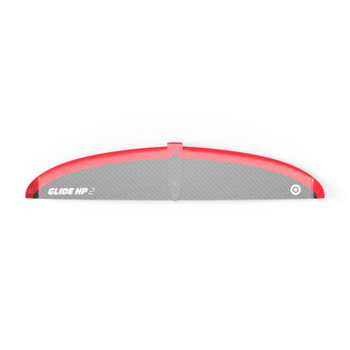
2021 NP Glide HP Tail Wing 2.0
Neil Pryde
Now: $119.00Was: $205.002021 NP Glide HP Tail Wing 2.0 Specifications Tail Span: 40cm Area: 225cm2Now: $119.00Was: $205.00 -

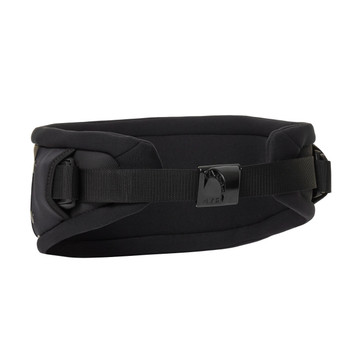
Mystic Wingman Foil Harness
Mystic
$169.99Mystic Wingman Foil Harness The Wingman is our wing foil harness, ideal for longer distances as a lightweight design with simple padding. It sits comfortably around the waist and leaves the rider with plenty freedom of movement. Featuring a selflocking...$169.99 -


F-One Rocket Wing Crossover 5'4 74L Demo
F-One
$1,639.00Title: F-One Rocket Wing Crossover 5'4 74L Demo Includes: Board Only Condition: MACkite Demo Guarantee: Gear is ready to ride and works as intended See pictures that reflect condition and any repair or signs of...$1,639.00 -
On Sale


2024 AK Nomad Foil Board 7'0 115L Demo
AK Durable Supply Co.
Now: $1,629.00Was: $1,829.002024 AK Nomad Foil Board 7'0 115L Demo Includes: Board only Condition: MACkite Demo Guarantee: Gear is ready to ride and works as intended See pictures that reflect condition and any repair or signs of wear Condition Nose...Now: $1,629.00Was: $1,829.00 -
On Sale


AFS Whitebird / 5'8" 85L Demo
AFS
Now: $1,449.00Was: $1,699.00Title: AFS Whitebird, 5'8, 85 L Demo Includes: Board only Condition: MACkite Demo Guarantee: Gear is ready to ride and works as intended See pictures that reflect condition and any repair or signs of wear Condition Scrached and...Now: $1,449.00Was: $1,699.00 -
On Sale

MKII Wing Pack 1240 FW / V 200 Stab - Demo
Now: $818.30Was: $1,169.00MKII Wing Pack Includes: 1240 Front, V 200 Rear, Fuse Color: Black / White Size: 1240, 200Condition: -Mackite Demo Guarantee: gear is ready to ride and works as intended -Like new, little wear -Surface scratches/ scuffs, see pictures No...Now: $818.30Was: $1,169.00 -
On Sale


Sonar HA1450 Front Wing / 1450 - Black -demo
North
Now: $566.20Was: $809.00Title: Sonar HA1450 Front WingIncludes: Front wing and caseColor: BlackSize: 1450Condition:MACkite Demo Guarantee: Gear is ready to ride and works as intendedSee pictures that reflect condition and any repair or signs of wearConditionLike...Now: $566.20Was: $809.00 -
On Sale
 Now: $307.30Was: $439.00
Now: $307.30Was: $439.00 -
On Sale
 Now: $991.20Was: $1,239.00
Now: $991.20Was: $1,239.00 -
On Sale


AFS PULSE Foilboard / 4'0 x 19.3" - 2025 - KoGL25
AFS
Now: $1,087.20Was: $1,359.00The Pulse, a minimal foil board designed for demanding wake, kite, and tow foil riders. Its moulded carbon construction offers unparalleled responsiveness and connectivity with the foil, providing a unique gliding sensation. Intuitive and...Now: $1,087.20Was: $1,359.00 -
On Sale
 Now: $831.20Was: $1,039.00
Now: $831.20Was: $1,039.00 -
On Sale

Naish Hover Wing Ascend CU 72L / 72L - White/Blue - 2025 - KoGL25
Naish
Now: $1,087.20Was: $1,359.00Enhanced profiling and R&D finesse has refined the Hover Ascend Range for optimum performance across all foiling disciplines. Designed with reduced swing weight and increased 'get go' characteristics, this versatile range appeals to wingfoilers, prone...Now: $1,087.20Was: $1,359.00 -
On Sale
 Now: $1,379.40Was: $2,299.00
Now: $1,379.40Was: $2,299.00 -
On Sale
 Now: $726.00Was: $968.00
Now: $726.00Was: $968.00 -
On Sale
 Now: $660.00Was: $880.00
Now: $660.00Was: $880.00 -
On Sale
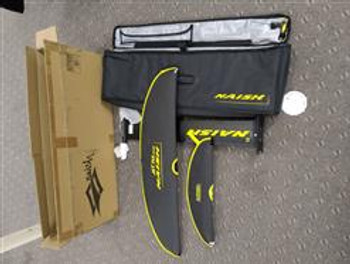 Now: $899.00Was: $1,475.00
Now: $899.00Was: $1,475.00 -

Sea Devil Cover Set / 840 - 2025
$61.00Sabfoil Cover Set P - Sea Devil 840 and StabThe cover has been built from high quality, heavy duty fabric to keep your wing safely stowed when you're traveling.It is equipped with internal foam protection with a protective outer shell.The hook and loop...$61.00 -


Mast Cover - B / M83K - M83PLK - M86P - M84RD - 2025
$44.31Sabfoil Cover Mast B - M83K/M83PLK/M86The cover has been built from high quality, heavy duty fabric to keep your mast safely stowed when you're traveling.It is equipped with internal foam protection with a protective outer shell.The hook and loop strip...$44.31 -

Sea Devil Cover Set / 1040 - 2025
$61.00Sabfoil Cover Q - Sea Devil 1040 and StabThe cover has been built from high quality, heavy duty fabric to keep your wing safely stowed when you're traveling.It is equipped with internal foam protection with a protective outer shell.The hook and loop...$61.00
So, what are the differences in these hydrofoils?
KITEBOARDING HYDROFOILS AND FOILBOARDS
- Long mast (30-40") to handle waves and chop
- Short fuselage for tight turns and quick pitch adjustment
- Full range of wing sizes to adapt for speed, conditions, and riding style.
- Track box is the most popular type of board connection
- Most boards range in size from 3'6-5'
- Most boards have the option to mount footstraps or hooks
SURFING HYDROFOILS AND FOIL SURFBOARDS
- Shorter masts (20-30") to allow for small wave riding without hitting the bottom.
- Short fuselage for tight turns and quick pitch adjustment
- Wing sizes range from large to very large.
- Both track boxes and tuttle style boxes are common.
- Most boards range in size from 4'5"-7'6"
- Added volume aids in early paddle entry on smaller boards
- No footstrap mounting options for most
SUP HYDROFOILS AND SUP FOILBOARDS
- Shorter masts (20-30") to allow for small wave riding without hitting the bottom.
- Short fuselage for tight turns and quick pitch adjustment
- Wing sizes range from large to very large.
- Both track boxes and tuttle style boxes are common
- Most boards range in size from 6'-10'
- Added volume aids in early paddle entry on smaller boards and additional stability when paddling
- Footstrap mounting options are available on some custom boards
WAKEFOILS AND WAKEFOIL BOARDS
- Short masts (15"-30") to handle chop and steep wakes
- Short fuselage for tight turns and quick pitch adjustment
- Full range of wing sizes to adapt for speed, rope-less riding, wake size, and riding style.
- Track box is the most popular type of board connection
- Most boards range in size from 3'6-5'
- Most boards have the option to mount footstraps or hooks
WINDSURF FOILS AND WINDSURF FOILBOARDS
- Long mast (30-40") to handle waves and chop
- Long fuselage for stability and pitch stability
- Full range of wing sizes to adapt for speed, conditions, and riding style.
- Tuttle is the most popular type of board connection
- Most boards range in size from 5'-8' with some models as long as 12'
- Most boards have the option to mount footstraps or hooks

